This document provides an introduction to dictionaries in Python. It explains that dictionaries are collections of key-value pairs that allow users to store, query, add, update, and delete information. It shows how to initialize an empty dictionary and populate it with initial key-value pairs. It also demonstrates how to query, add, update, and delete key-value pairs from a dictionary. Finally, it provides a phone book example to demonstrate using dictionaries in a practice program.
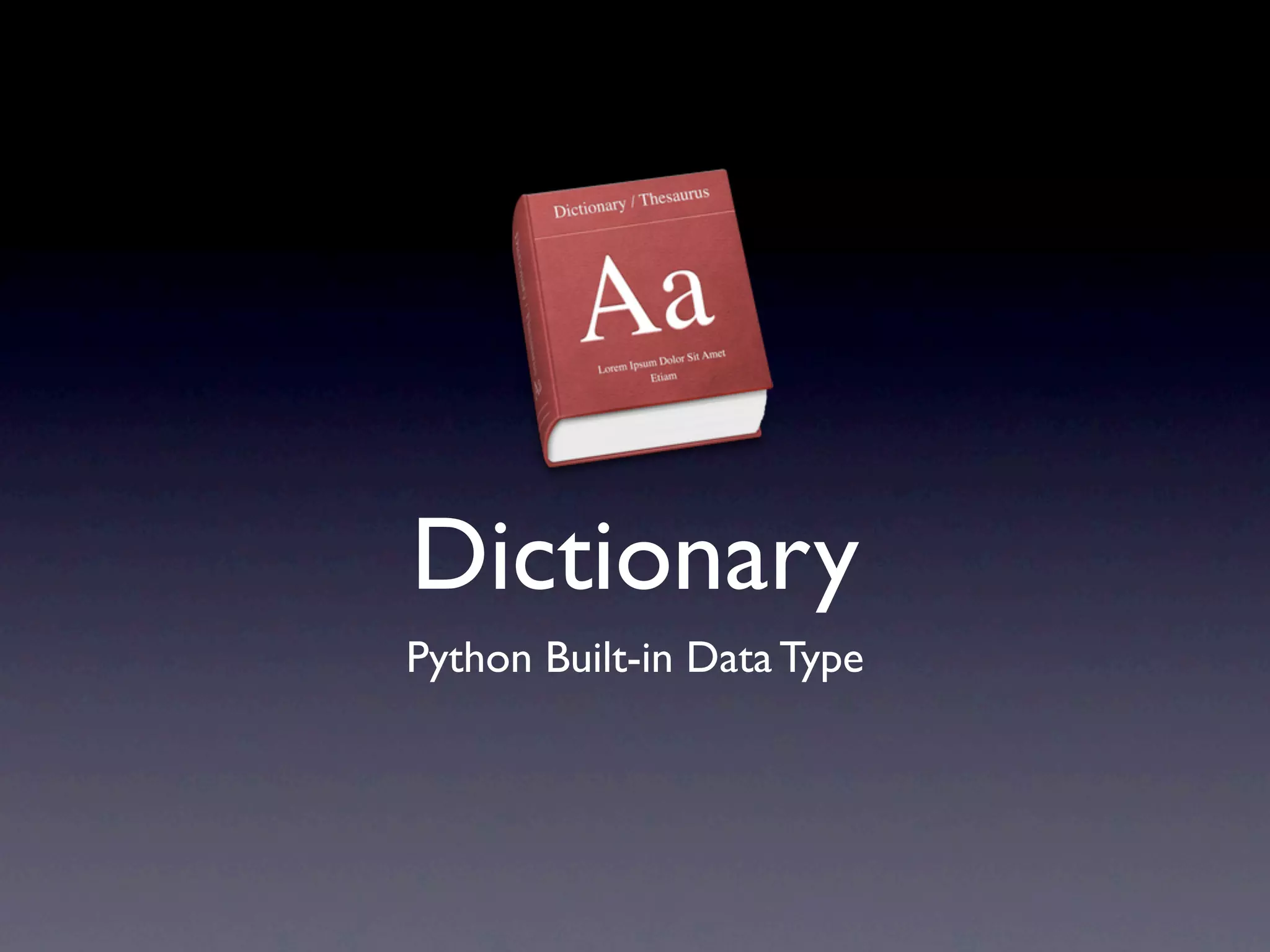
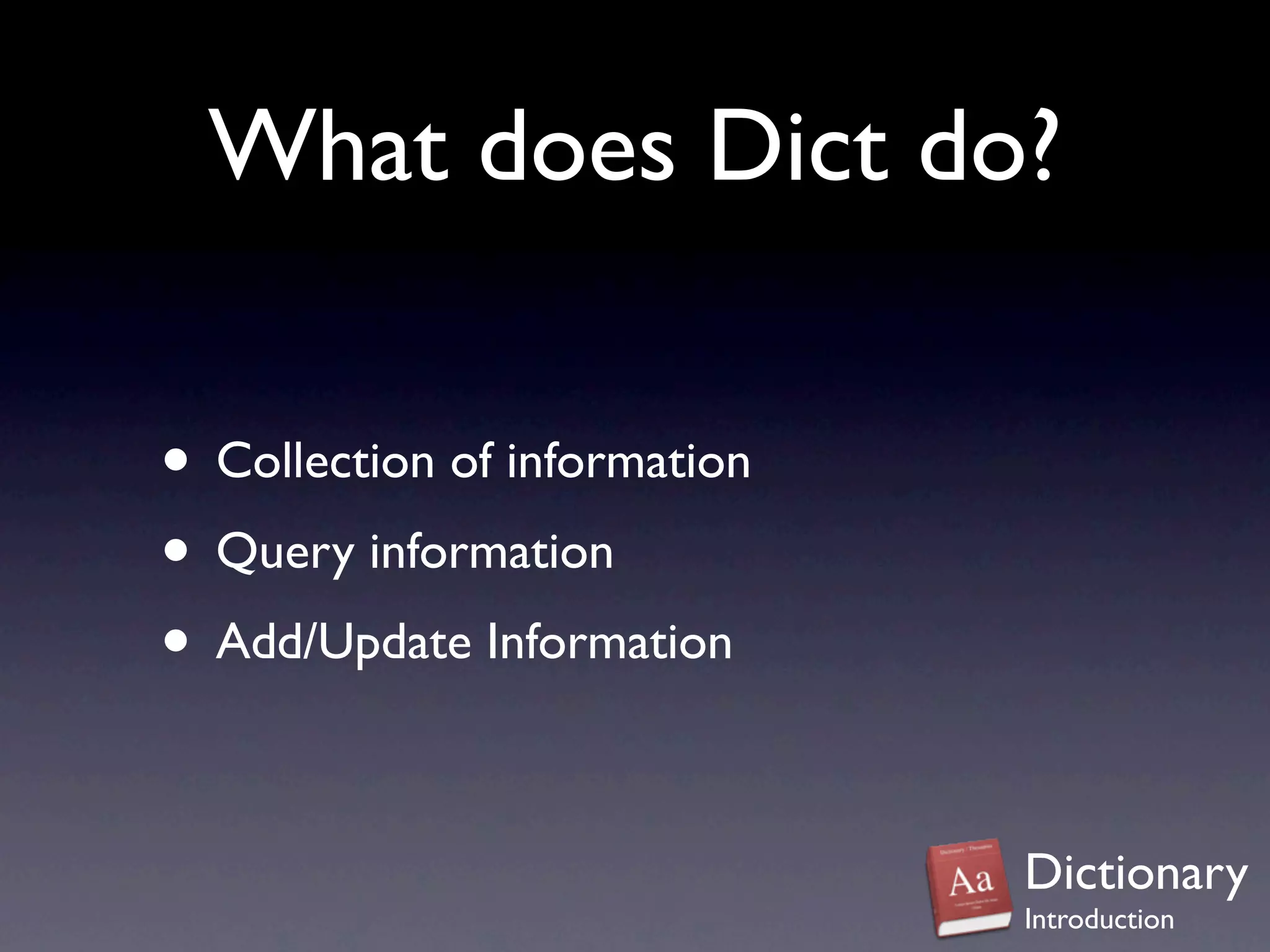
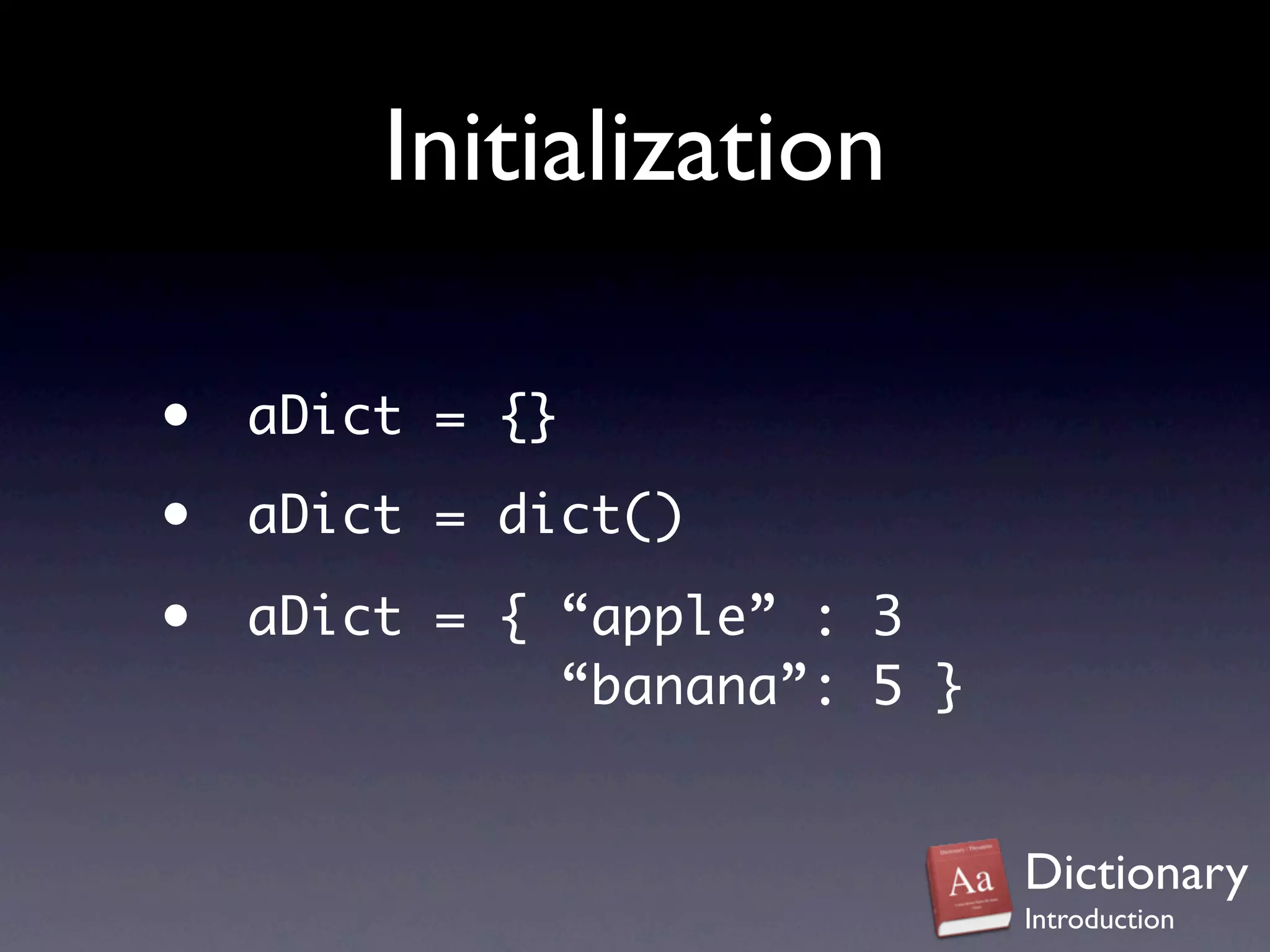
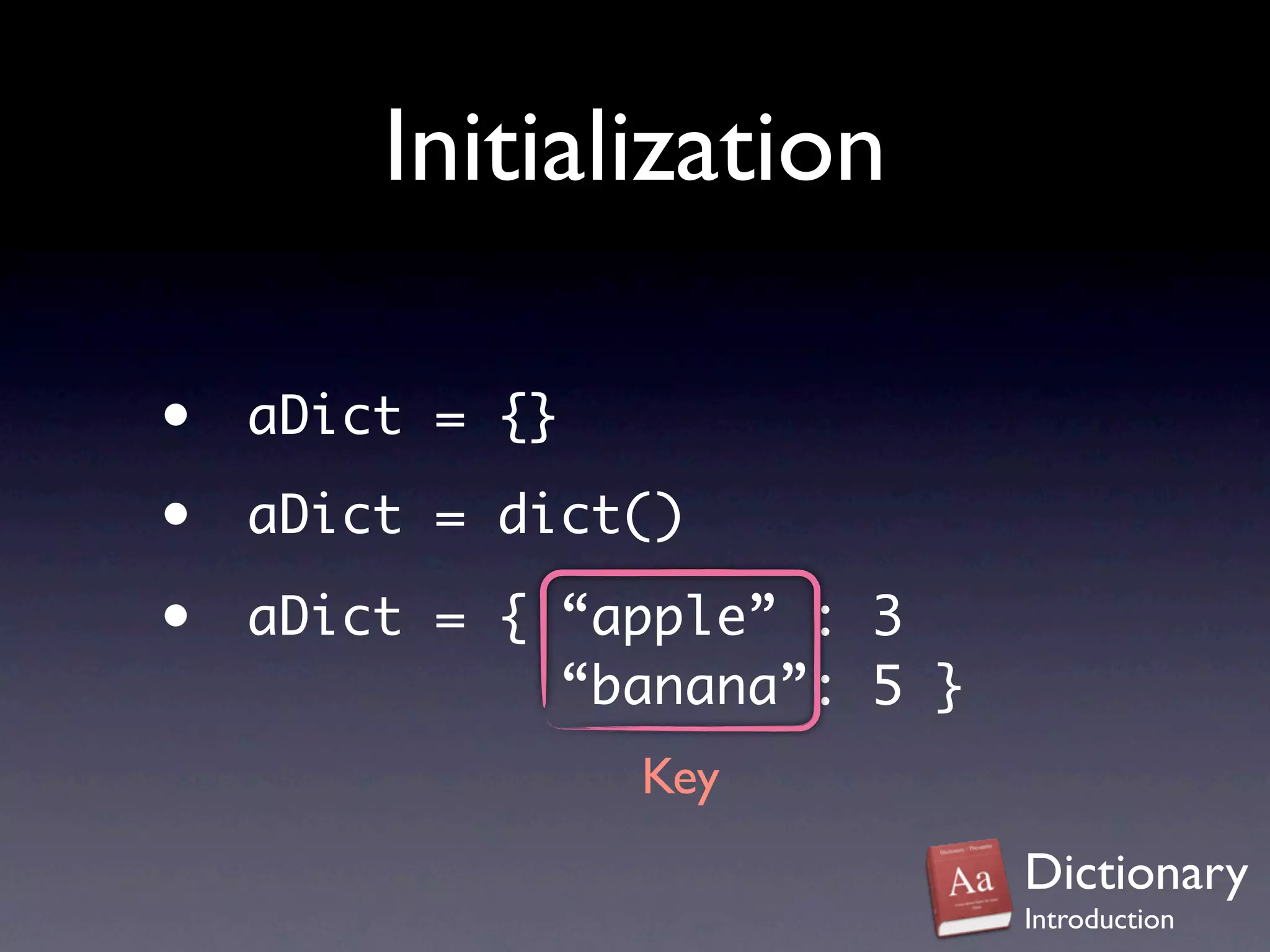
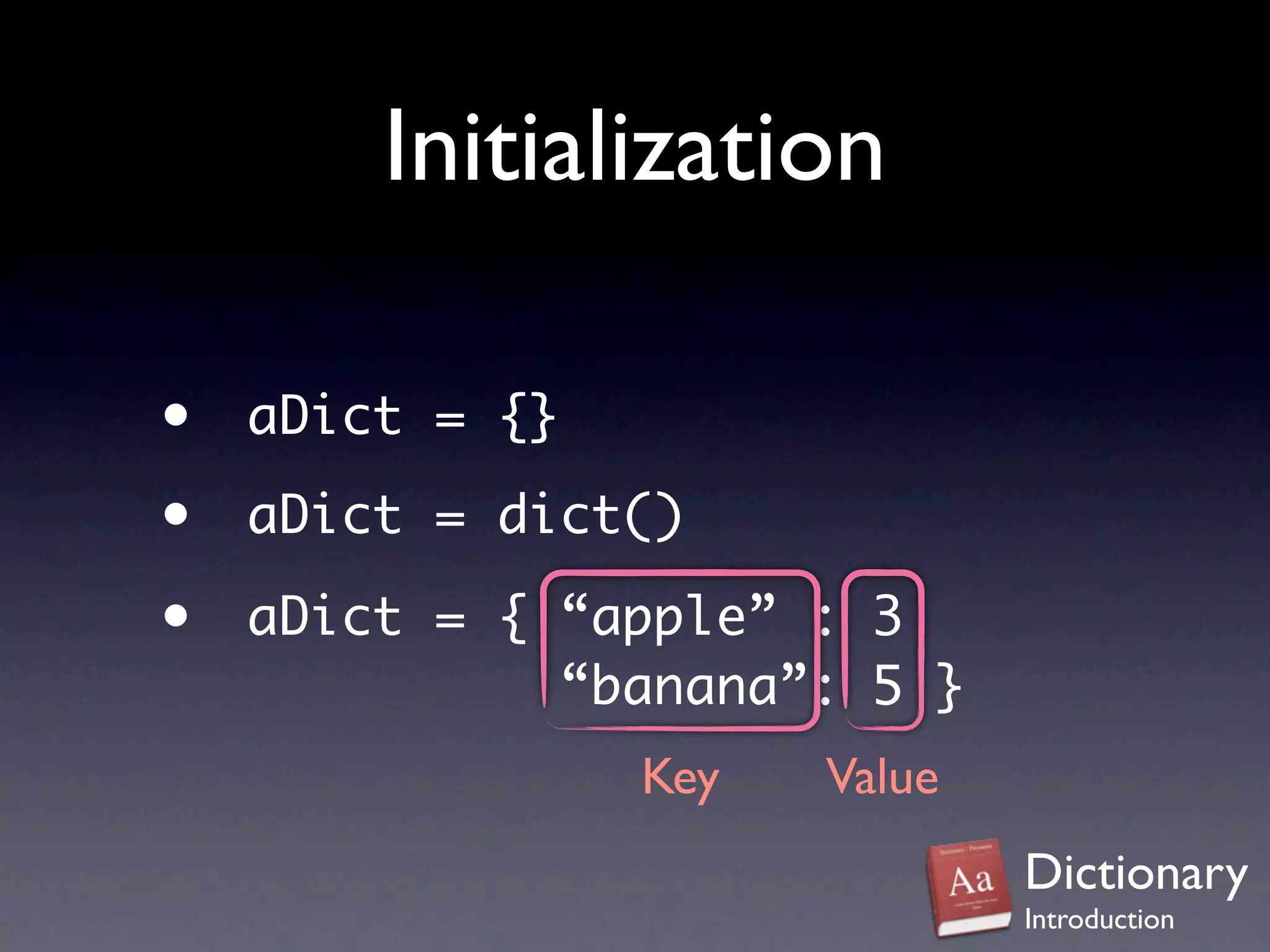
![Query
>>> aDict["apple"]
3
>>> aDict.keys()
dict_keys(['apple', 'banana'])
>>> aDict.values()
dict_values([3, 5])
>>> aDict.items()
dict_items([('apple', 3), ('banana', 5)])
Dictionary
Introduction](https://image.slidesharecdn.com/dictionary-101207002933-phpapp01/75/Python-Dictionary-6-2048.jpg)
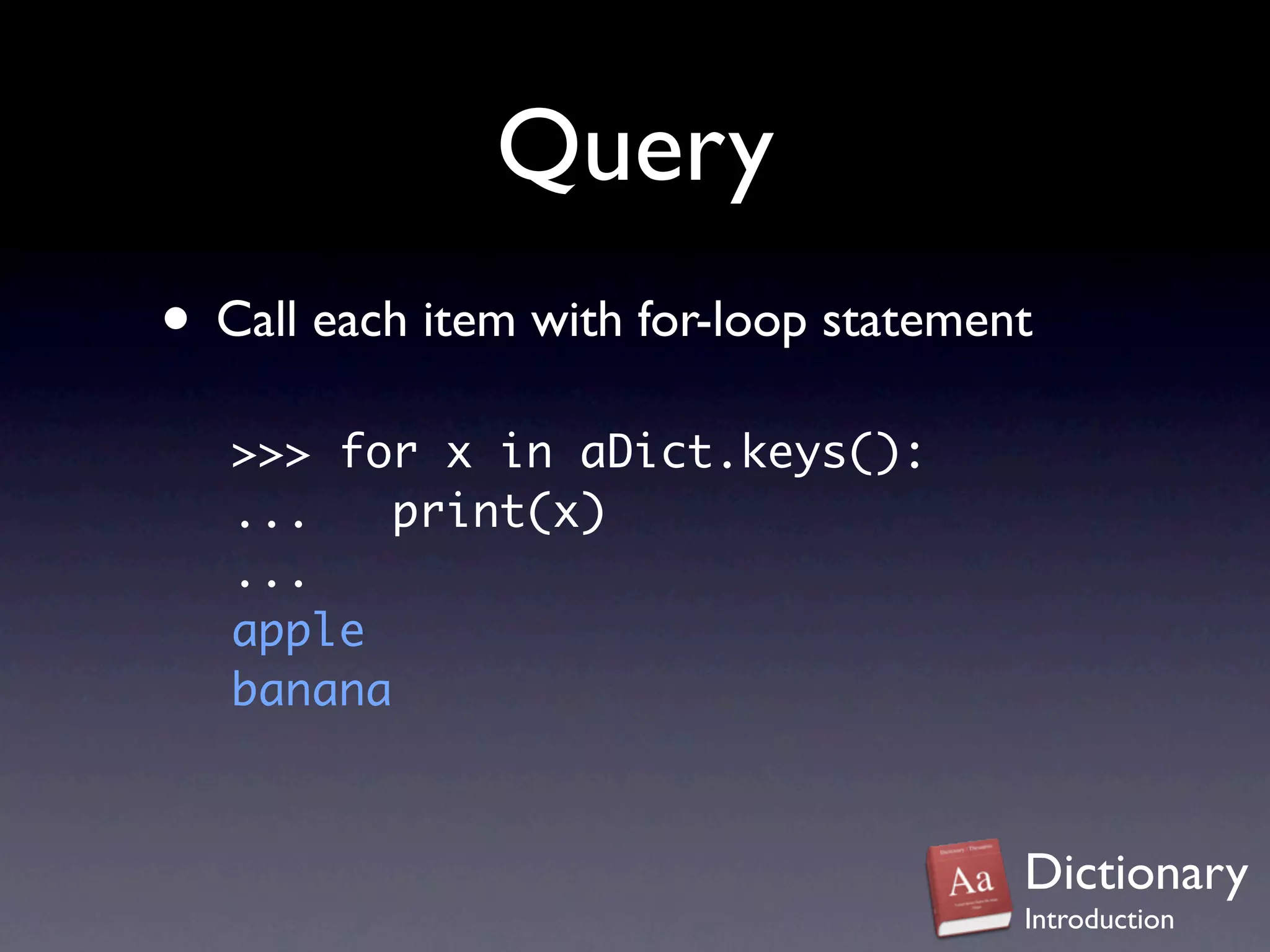
![Add
• Directly add a item to dictionary
>>> aDict
{'apple': 5, 'banana': 5}
>>> aDict['waterfruit'] = 8
>>> aDict
{'waterfruit': 8, 'apple': 5, 'banana': 5}
Dictionary
Introduction](https://image.slidesharecdn.com/dictionary-101207002933-phpapp01/75/Python-Dictionary-8-2048.jpg)
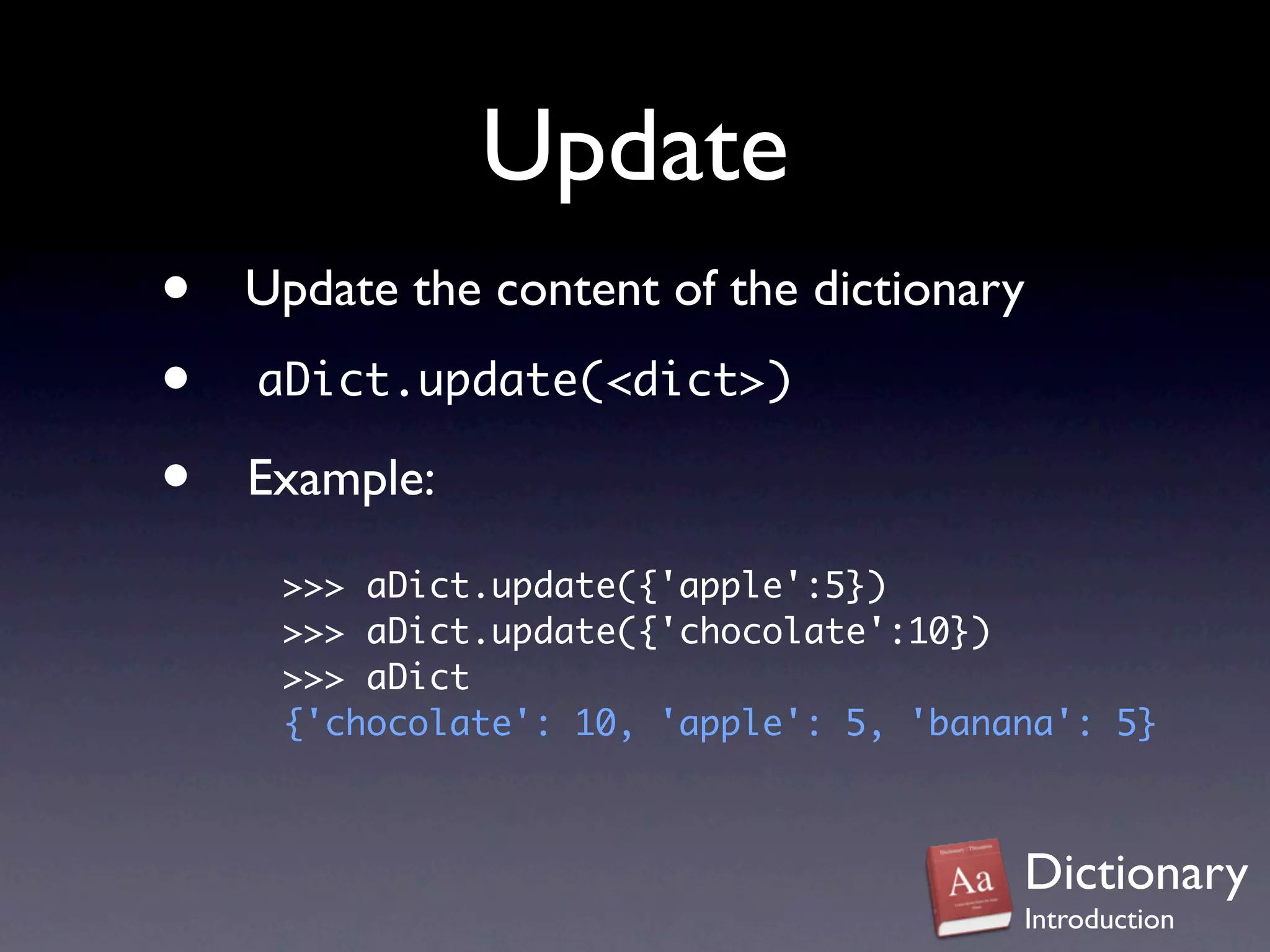
![Delete
• Remove a item from the dictionary
• del aDict[“apple”]
Dictionary
Introduction](https://image.slidesharecdn.com/dictionary-101207002933-phpapp01/75/Python-Dictionary-10-2048.jpg)
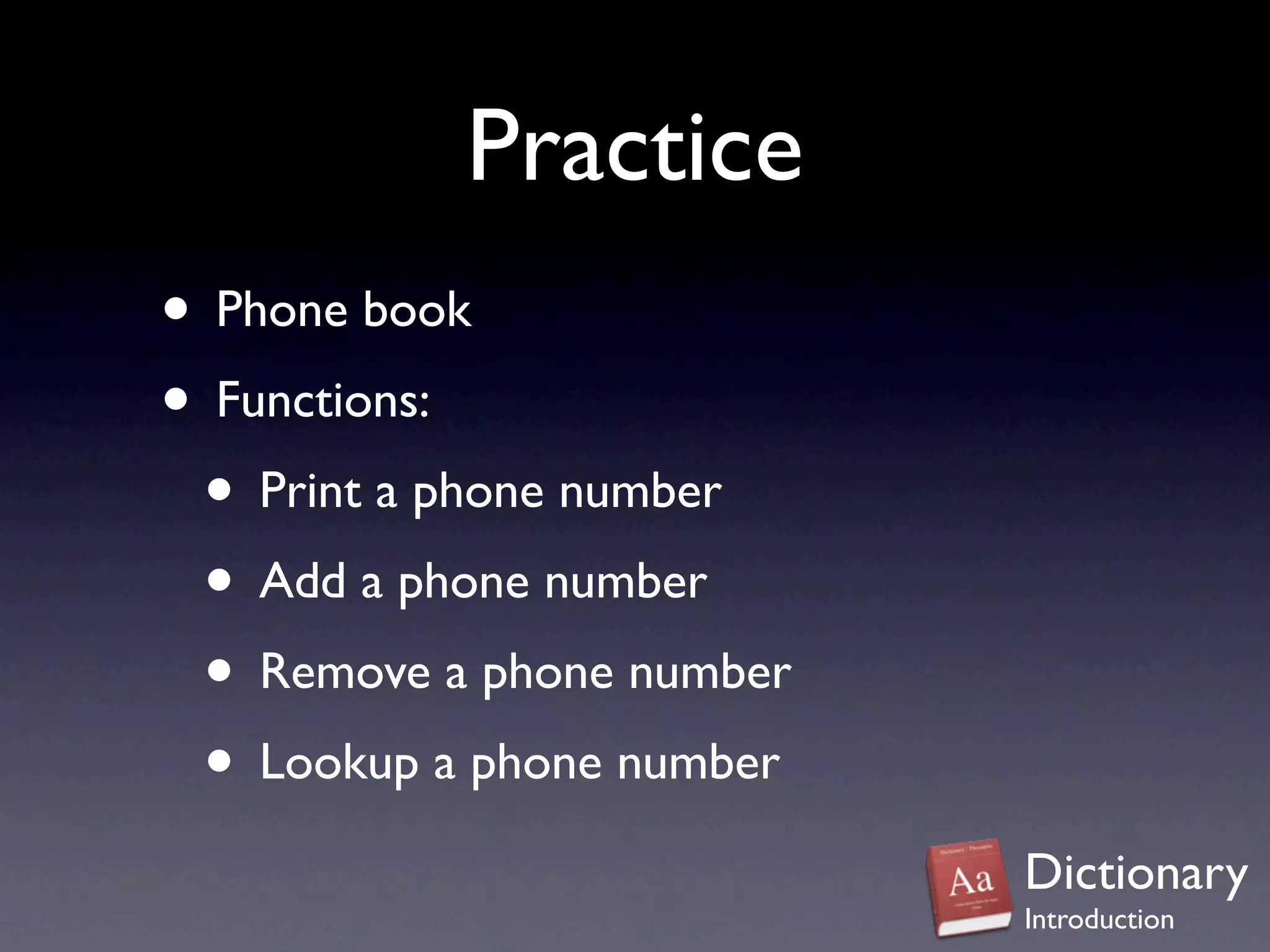
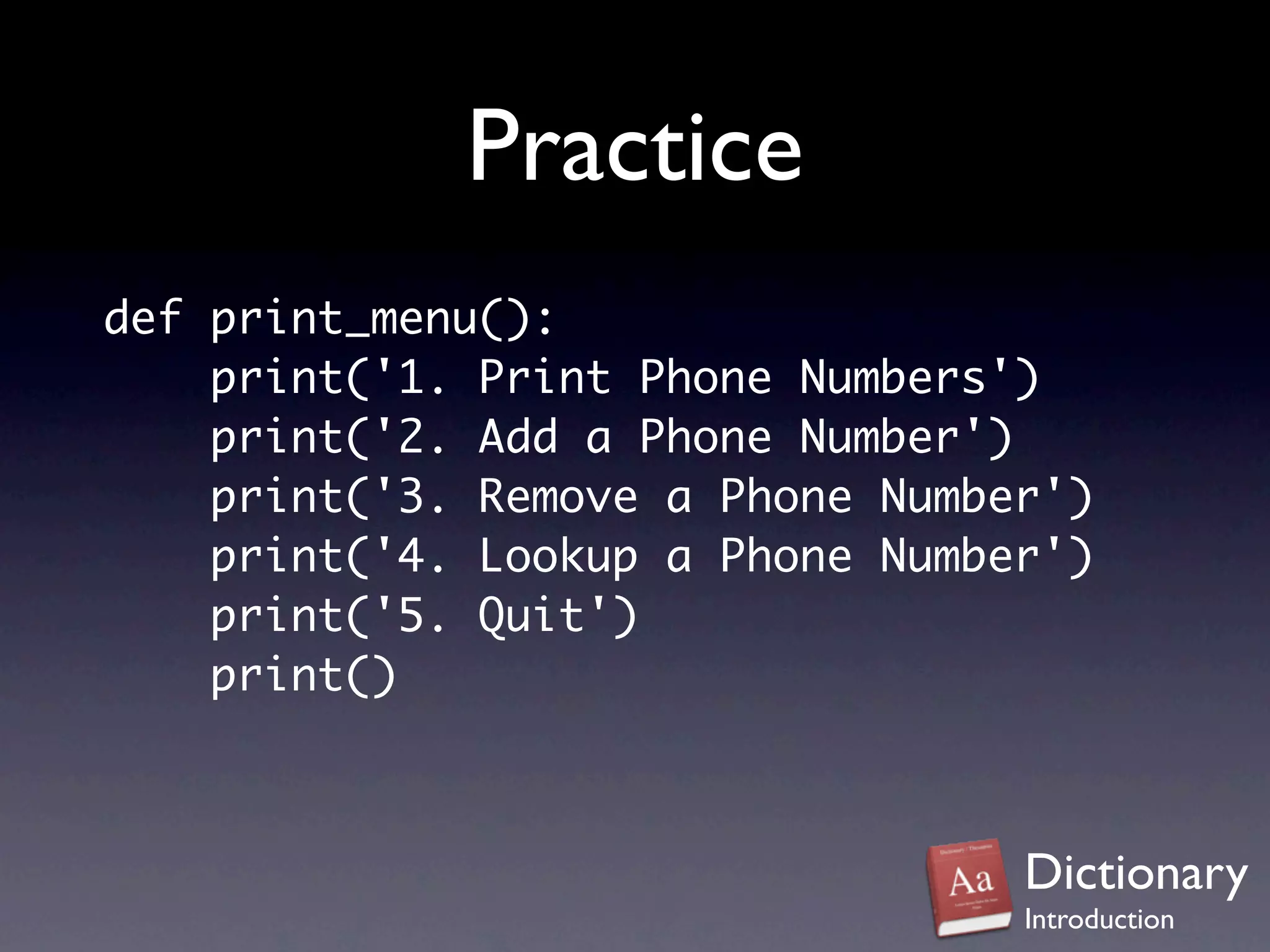
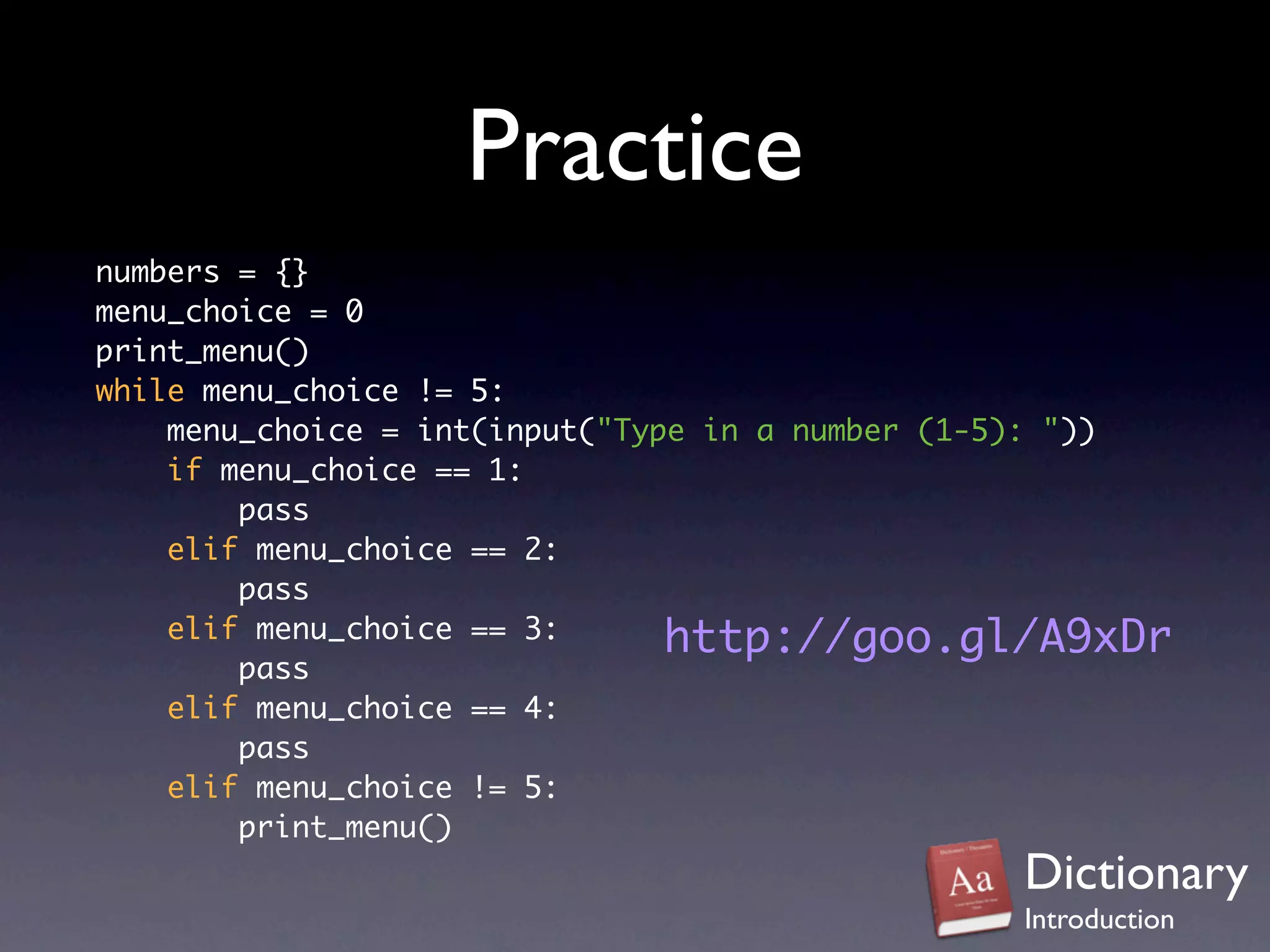
![Print
if menu_choice == 1:
print("Telephone Numbers:")
for x in numbers.keys():
print("Name: ", x, "tNumber:", numbers[x])
print()
Dictionary
Introduction](https://image.slidesharecdn.com/dictionary-101207002933-phpapp01/75/Python-Dictionary-14-2048.jpg)
![Add
elif menu_choice == 2:
print("Add Name and Number")
name = input("Name: ")
phone = input("Number: ")
numbers[name] = phone
Dictionary
Introduction](https://image.slidesharecdn.com/dictionary-101207002933-phpapp01/75/Python-Dictionary-15-2048.jpg)
![Remove
elif menu_choice == 3:
print("Remove Name and Number")
name = input("Name: ")
if name in numbers:
del numbers[name]
else:
print(name, "was not found")
Dictionary
Introduction](https://image.slidesharecdn.com/dictionary-101207002933-phpapp01/75/Python-Dictionary-16-2048.jpg)
![Lookup
elif menu_choice == 4:
print("Lookup Number")
name = input("Name: ")
if name in numbers:
print("The number is", numbers[name])
else:
print(name, "was not found")
Dictionary
Introduction](https://image.slidesharecdn.com/dictionary-101207002933-phpapp01/75/Python-Dictionary-17-2048.jpg)